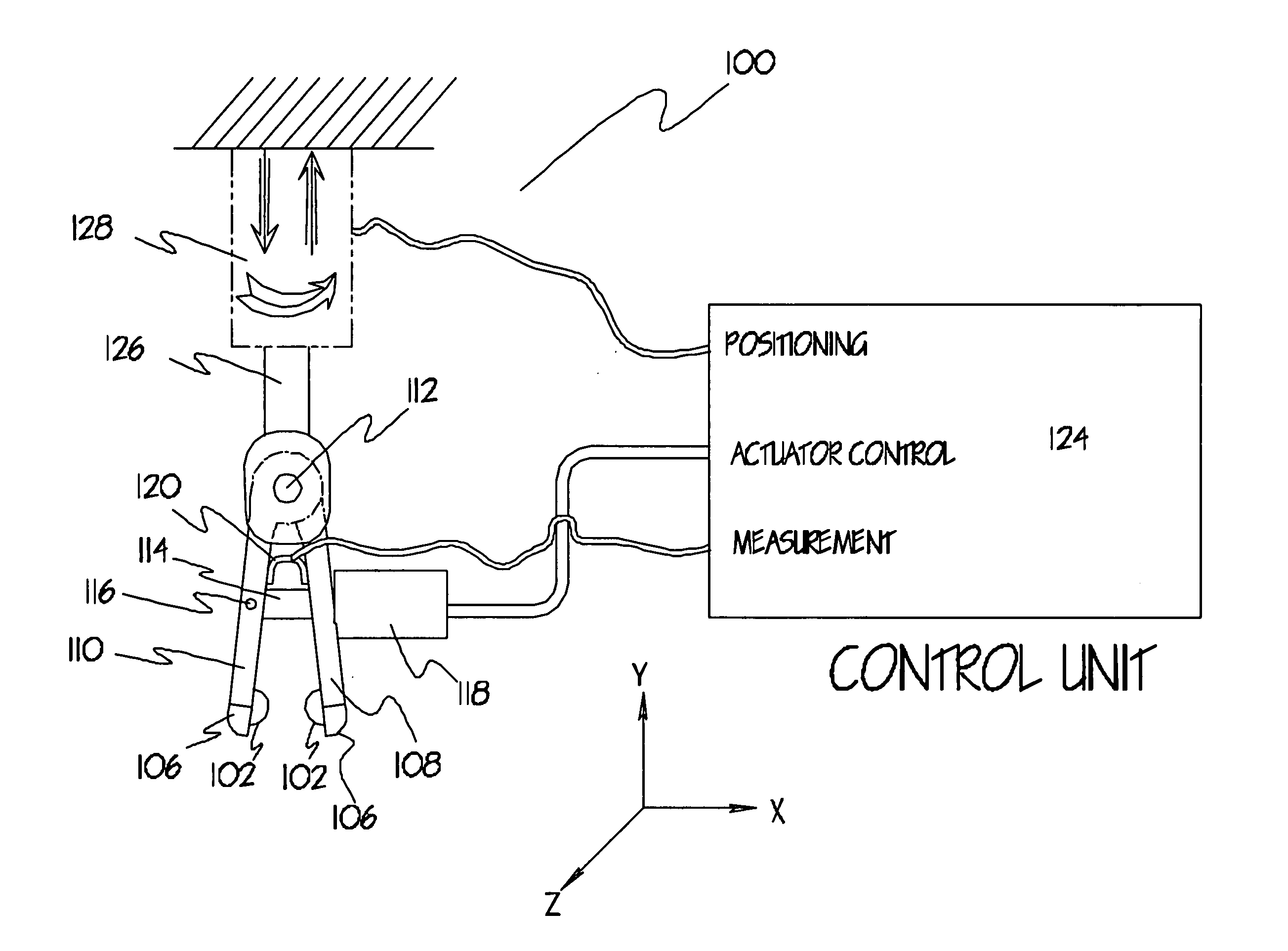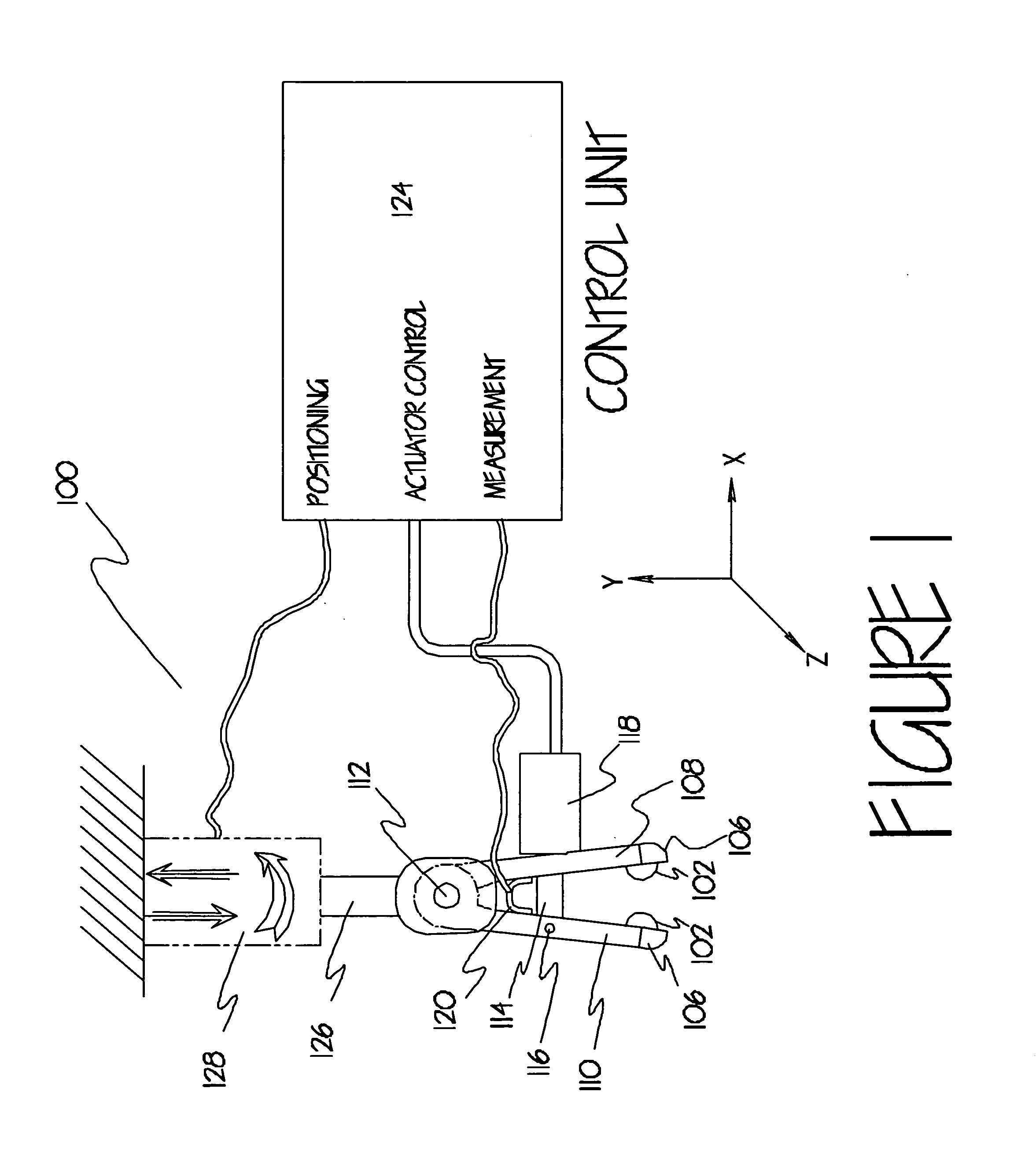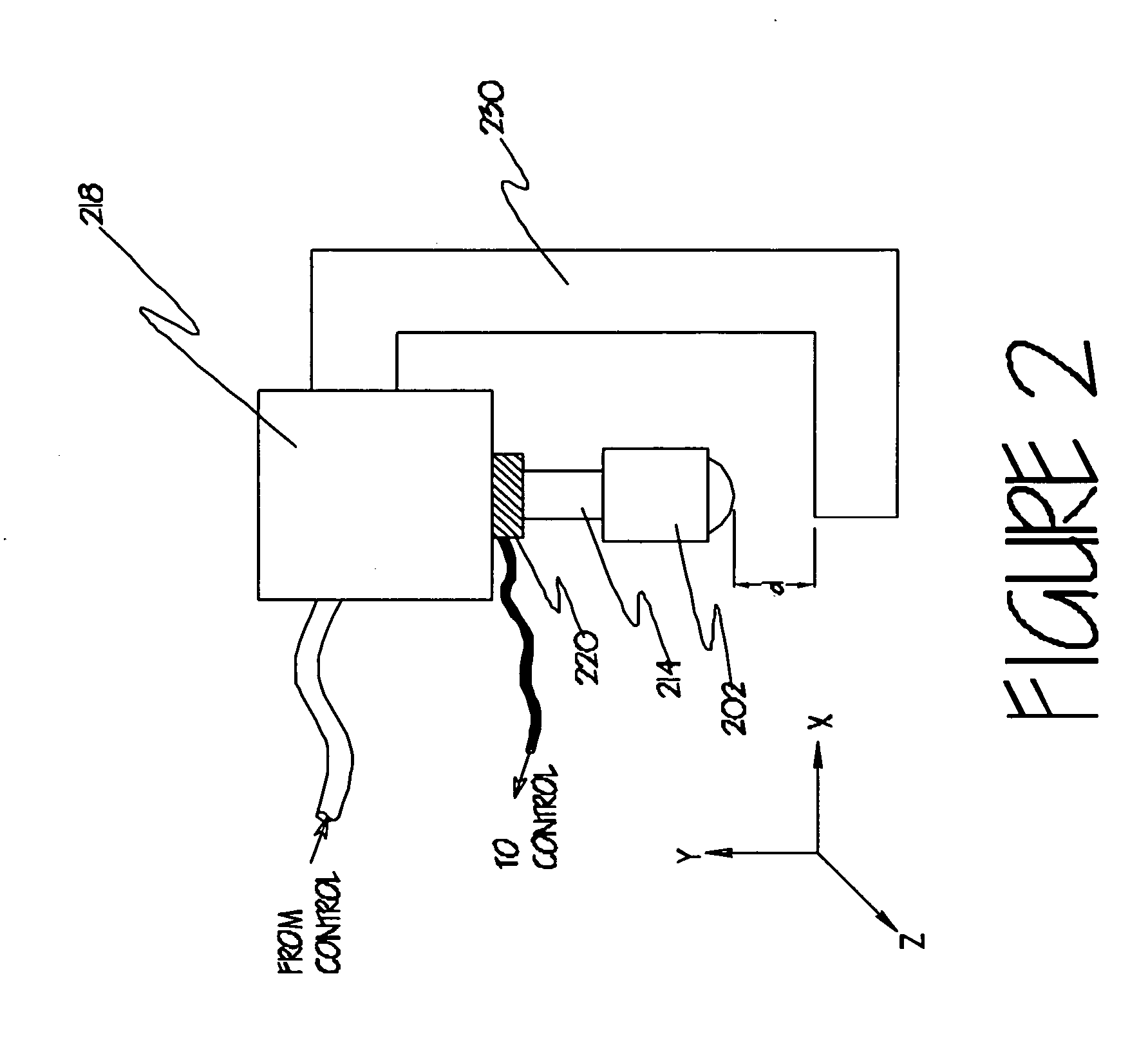Surface treatment apparatus and method
- Summary
- Abstract
- Description
- Claims
- Application Information
AI Technical Summary
Benefits of technology
Problems solved by technology
Method used
Image
Examples
Embodiment Construction
[0031] Referring to the embodiment of the present invention shown in FIG. 1, the apparatus 100 is comprised of surface treatment elements 102 for inducing compressive residual stress in the surface of a workpiece disposed within the tip portions 106 of a first arm 108 and a second arm 110. The first arm 108 and second arm 110 are oriented in a caliper-configuration such that the surface treatment elements 102.are in direct opposition to one another. The first arm 108 and second arm 110 are disposed within a base 126 for attaching the apparatus to a positioning device 128 such that the first arm 108 and second arm 110 are free to rotate relative to the base 126. A linkage 114 extends freely through the first arm 108 and terminates at a pivoting pin connection 116 in the second arm 110 thereby mechanically linking the first arm 108 to the second arm 110. An actuator 118 attached to the first arm 108 actuates the linkage 114 thereby moving the first arm 108 and second arm 110 in proxim...
PUM
| Property | Measurement | Unit |
|---|---|---|
| Area | aaaaa | aaaaa |
| Dimension | aaaaa | aaaaa |
| Compressive stress | aaaaa | aaaaa |
Abstract
Description
Claims
Application Information
 Login to View More
Login to View More - R&D
- Intellectual Property
- Life Sciences
- Materials
- Tech Scout
- Unparalleled Data Quality
- Higher Quality Content
- 60% Fewer Hallucinations
Browse by: Latest US Patents, China's latest patents, Technical Efficacy Thesaurus, Application Domain, Technology Topic, Popular Technical Reports.
© 2025 PatSnap. All rights reserved.Legal|Privacy policy|Modern Slavery Act Transparency Statement|Sitemap|About US| Contact US: help@patsnap.com



